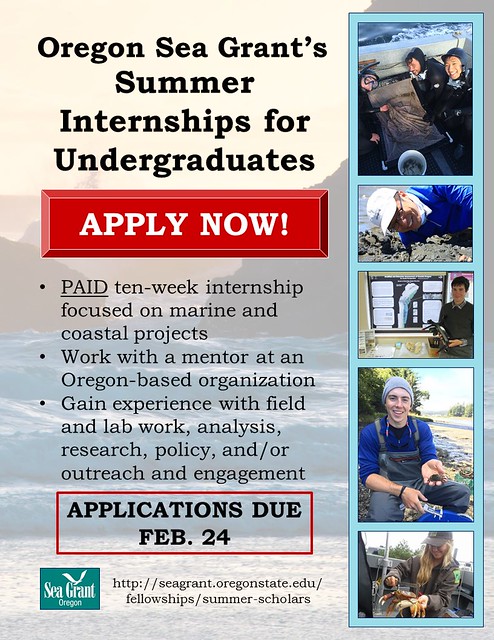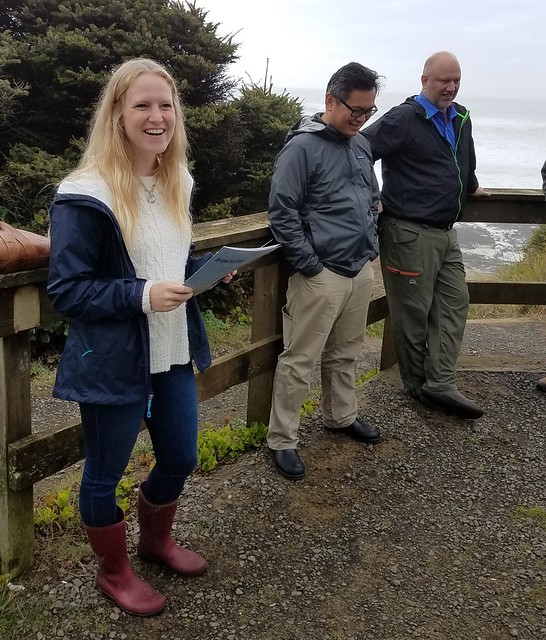Hello Everybody,
It’s been a while since my first blog post, so it’s about time that I follow through with that second entry. As you guys may or may not recall, I am looking at the anti-diabetic pharmaceutical drug, metformin, as a contaminant of emerging concern (CEC) in the lower Columbia River. I know I promised to talk more about metformin as a drug, but I thought I would save this topic for next time. Instead, I am going to give a brief overview of my research methods that I have been busy developing for the past nine months.
In my last entry, I discussed the high incidence of Type II diabetes around the world and the discovery of metformin (the most commonly prescribed drug for Type II diabetes) as one of the most abundant pharmaceuticals being introduced into the environment. Metformin is not metabolized by the human body and excreted relatively unchanged into wastewater. Wastewater treatment does not necessarily target pharmaceuticals so much of the drug ends up in the environment.
My primary goal is to characterize metformin in the lower Columbia River in this environmental state. This means taking water samples and somehow measuring how much metformin is in each sample. So how do I do this? This is the question that I have been wrestling with since I started graduate school back in April. The short answer: Liquid Chromatography with Tandem Mass Spectrometry (LC-MS/MS).
PLEASE DON’T RUN AWAY!! Those words scared me as much as you (unless, of course, you happen to be a chemist who loves chromatography). The LC-MS/MS machine scared me even more than that, until I understood that it is just an over-glorified “sorting machine”. I promise I’ll make this as simple as possible, for both you and me — it’s certainly what I’ve been trying to do since I first started my research. The pictures below sum up the bulk of my research and methods right now.

In fact, I’ve been participating in the OMSI Science Communication Fellowship to figure out how to simplify these convoluted methods. So far, I have completed three Saturday “Meet-A-Scientist” events where I try to communicate complicated scientific topics to a broad public audience (from kids to adults) by using a visual demo. I built a home-made “sorting machine” by reducing the LC-MS/MS machine to its simplest components. I would argue that I’ve learned more than my audience during this process – not only is my demo similar to the real machine in conceptual function, but it also requires an eerily similar degree of mechanical frustration.



(top) The Beast. Real LC-MS/MS requires a very scare machine. (bottom left) The Beast: Part Deux. Pretend LC-MS/MS also requires a very scary machine that breaks a lot. (right) The silver lining: kids love my home-made sorting machine!
What exactly is LC-MS/MS? Well, let’s start at the beginning: what is liquid chromatography (LC)? Liquid chromatography is just a way to separate something (i.e. a compound of interest) from a mixture. In my case, I use high performance liquid chromatography (HPLC) which is just faster liquid chromatography under high pressure.
In its most basic form, HPLC requires a column (“stationary phase”) and a solvent (“mobile phase”) — in other words, two things that will interact with your compound in different ways. The stationary phase column is a tube packed with tiny porous spheres. The mobile phase is a liquid that is pumped through the column with your mixture. The idea is that your mixture is pushed down the column with the mobile phase and each compound in the mixture will stick to the column for a different amount of time. The compounds with greater affinity for the stationary phase will be pushed off later than the compounds that have greater affinity for the mobile phase. The goal is to get your compound off the column without other compounds coming off at the same time. The column can be highly customizable to better separate your unique compound, such as sphere size, column length, and modifications to sphere surfaces. The mobile phase can also be customizable depending on your needs, although it is typically water, organic solvent (e.g. methanol), or a mixture of the two. As you can imagine, half the battle with HPLC is selecting the appropriate column and mobile phase — the selection process can take many months of expensive and time-consuming trial and error (this was the first three months of my project!).
HPLC is the first part of the LC-MS/MS machine. The machine injects the mixture (river water, in my case) onto the column and rinses the column with the mobile phase. My mobile phase is a solution of water and methanol that increases with time. As the methanol concentration increases, the compounds in the river water are “pulled” off the column at different times depending on their unique chemical characteristics.

(left) The HPLC column (stationary phase) is a tube packed with tiny porous spheres. (right) The idea behind liquid chromatography. The mixture plus a mobile phase solvent is injected onto the column and the compounds in the mixture separate at different times as they interact with the column and mobile phase differently.
The stuff coming off the column is recorded by the computer and represented in the form of a chromatogram, which shows the amount of material coming off the column over time. However, the question remains: how do we know which compound is coming off the column at which time? This is where the second part of the LC-MS/MS machine comes in.

The liquid chromatography tandem mass spectrometry (LC-MS/MS) machine consists of two parts: an HPLC machine to perform liquid chromatography (LC) and a mass spectrometer to perform tandem mass spectrometry (MS/MS). The computer represents the data with a chromatogram which shows the amount of material coming off the column with time.
Mass spectrometry (MS) is essentially just an extra step of “sorting” based on the specific mass of compounds. After your mixture has been separated by liquid chromatography, a mass spectrometer identifies the compounds coming off the column based on their unique masses.
The mass spectrometer first excites (i.e. ionizes) the separated compounds coming off the HPLC so that the machine can use charges to sort and pull the compounds through the machine to the detector. Specifically, the ionized compounds follow a path through an acceleration chamber and into a deflection field produced by two magnets. These magnets will deflect compounds differently based on their mass. Think of it like being shot through a cannon: the light cannonball will go farther than the heavy cannonball; Calista Flockhart will go farther than Mama Cass. The machine can be programmed to only let one specific mass, several masses, or all masses through to the detector. The detector will then record how much of each ionized compound is coming out of the mass spectrometer.

A basic mass spectrometer. The compounds coming out of the HPLC column are ionized and pulled through the system. A magnet deflects compounds differently depending on their mass. In this picture, the mass spectrometer has been programmed to detect all ionized compounds, but it can also be programmed to detect only one or a few masses. (picture courtesy of Khan Academy)
In my case, I use tandem mass spectrometry (MS/MS), which goes a step further and identifies the structure of the compound. A tandem mass spectrometer is just like a “basic” mass spectrometer, only the ionized compounds are broken into pieces in a modified acceleration chamber. Instead of sorting whole compounds based on mass, the machine sorts the fragments of compounds based on mass. You can then verify the structure of your compound of interest by looking at what fragments are present or not present. This is especially helpful if your compound of interest is in a mixture with other compounds that have similar masses, which is the case for metformin in river water.

Caption: A tandem mass spectrometer (MS/MS). The compounds coming out of the HPLC column are ionized and pulled through the system, just like in the basic mass spectrometer. However, MS/MS breaks up the compound(s) coming off the HPLC column into fragments. These fragments are then sorted by mass, rather than the whole compound. MS/MS can help verify the identity of a compound in a mixture of compounds that might have similar mass (as is the case for my river water samples).
THAT’S IT! LC-MS/MS is so simple, right?! Needless to say, the method development for LC-MS/MS is an extensive process. Nine months later, and I am just starting to realize this.
I am currently working with the OHSU Core Lab to fine-tune their LC-MS/MS machine for separation of metformin (and its primary breakdown product, guanylurea) from river water. I have a ton of Columbia River water samples from this fall that I am eager to run, so hopefully I will be able to start collecting data soon! In the meantime, I will try my best to separate any LC-MS/MS frustration from my mixture of scientific curiosity that brought me to this amazing graduate program!
Wish me luck!













